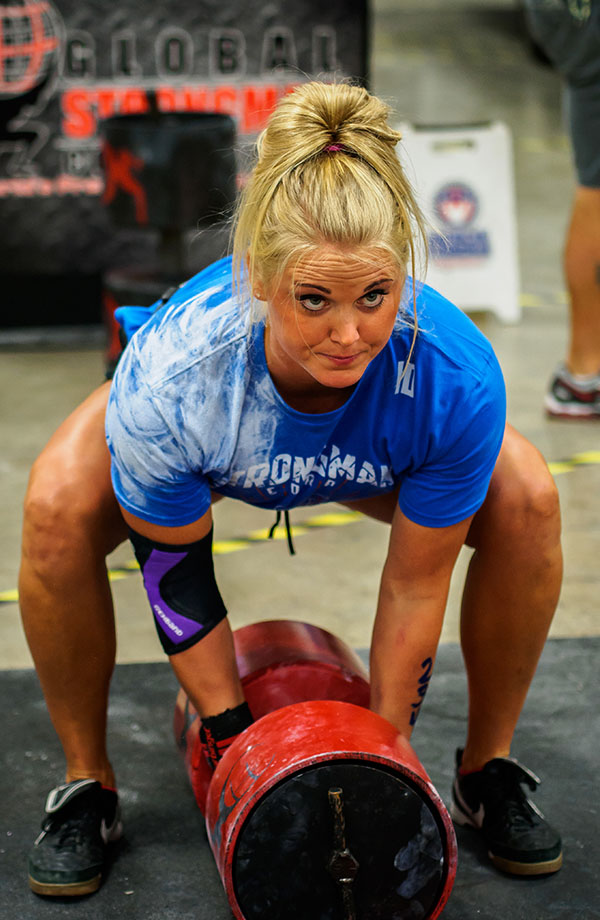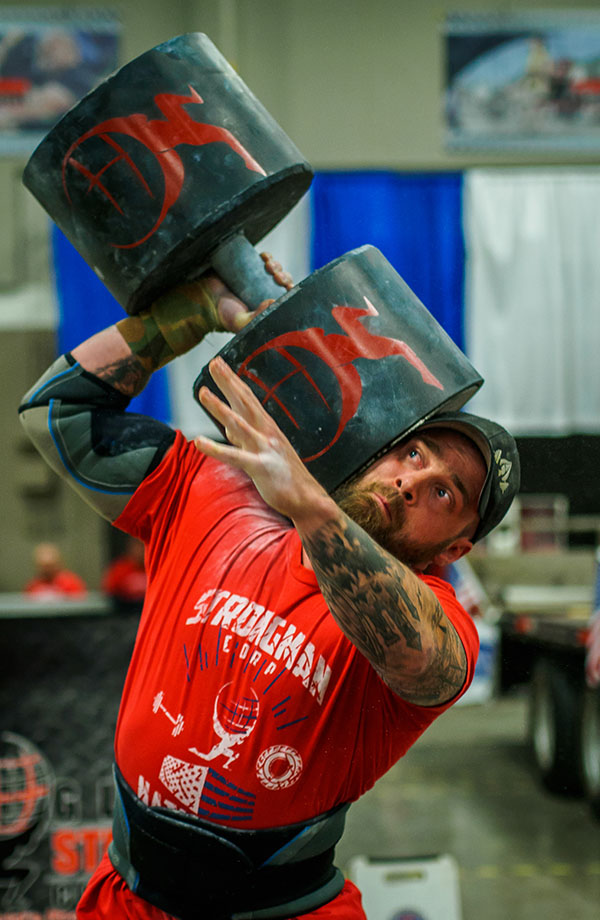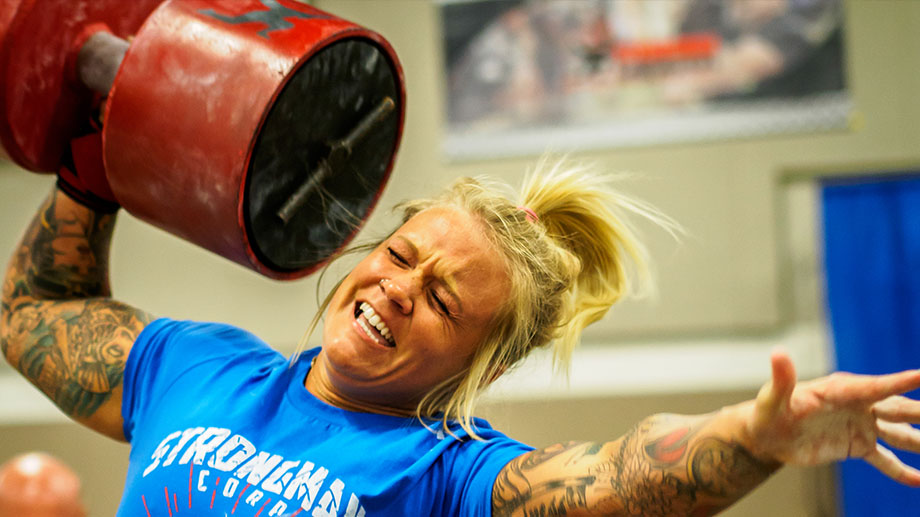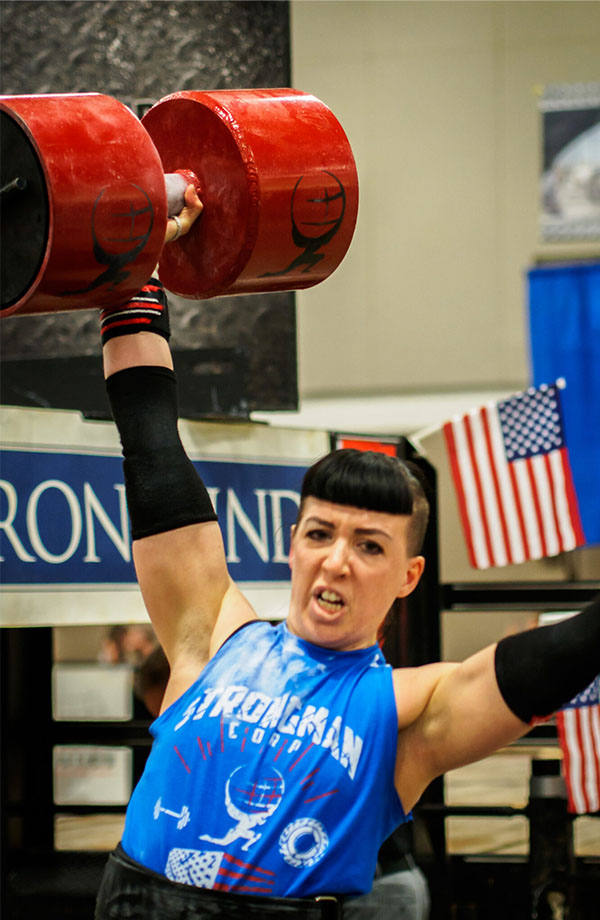Weightlifters are the kings of the overhead lifts. A lifetime dedicated to moving a barbell from floor to overhead looks effortless through perfect technique and practice. It becomes second nature to the athlete, just like walking down the street.
This highly specialized skill is performed with the barbell; often one that is perfectly balanced and designed to work with the energy of the lifter. Elite lifters often only work with the bar. Dumbbells, machines and kettlebells are often left in the corner to gather dust.
I find that to be a shame because excitement about a new challenge can often reinvigorate stale training. I spoke in my last article about adding in strongman exercises to improve your weightlifting. Today I’ll introduce you to one that has not only physical benefits but can add a great bit of fun to your training. Without further ado may I present to you, the Circus Dumbbell or CDB for short.
A comically exaggerated piece of equipment, the CDB gets it’s name from where it was born; the traveling Vaudeville and circus shows of the turn of the century. The promoters understood the power of visual impact. A traditional dumbbell is too compact to be impressive from the stands, so they blew up the ends and widened the handle. The ringmaster would pull an Average Joe from the audience and he would struggle to pick it up from the ground. The Strongman, draped in a Leopard skin (that he killed with his bare hands), would then effortlessly lift the bell from the ground and jerk or bent press it over his head.
Note: I go into much more detail on individual steps below the following “How To” section.
Breaking It Down
Start with a CDB that you know you can control. Most of them unloaded weigh 50 to 75 pounds and provide a good jumping off point. Don’t increase the weight until you can perform an easy 5 reps with each arm. Stand over the implement with your feet shoulder width apart. Bend down at the hips with soft knees like you are performing a Romanian Deadlift. Grab the CDB with two hands. You are allowed to perform the clean with both hands but before you start the press you must have only one hand on the Bell.
The rack position for the CDB can be slightly tricky. Place the head of the bell on the back of your shoulder behind your head. Point your elbow up. The top head of the dumbbell will be close to the eleven o’clock position. There is a bit of “feel” needed here to find your balance point. It will vary from lifter to lifter.
Before you begin your dip it is important to remember to have only one hand on the CDB. Your other hand should be completely free of the weight. Most athletes will have the non-pressing arm straight out to the side as to balance your uneven position. At this point, I will describe the lift from the dumbbell loaded in the right hand.
You will begin your dip with your feet planted in the same way you would for a traditional jerk. Begin your dip slowly by pushing your hips back, but, instead of going straight down you will load your left hip with 60% or more of the weight as you go down. This will allow you to keep the CDB closer to your center of gravity. This movement should also be performed slightly slower than you would with a traditional jerk. The weight in much more difficult to control and a quick down will cause the bell to be difficult to control.
In traditional weightlifting the plates on the ends of the bar will cause bar bend (or whip) that will aid you in the jerk. This is not true in this movement. Coming quickly from the rack to reversing the dip will make you unstable. Often, You will see a Strongman pause at the bottom of the dip then begin the jerk. This allows the CDB to remain level and not tip when the “up” is started.
When stable, begin your jerk. Come straight up with violent force and begin to extend your pressing arm. Your left leg will stay in it’s current position but your right leg should move slightly out and forward. This allows you to slide your hip under the dumbbell for the catch at the top. It is imperative that your press the CDB straight up. Most beginners will have control issues and the bell will commonly float out to the side of the body. You will instantly lose control of the weight and it will be impossible to correct (and maybe even a bit dangerous).
When your arm is locked out securely overhead you must demonstrate control and bring your your feet together as you would on the Jerk. In a contest you would receive a down signal to then deliver the CDB to the floor. DO NOT DROP THIS WEIGHT. A number of things can happen if you do, including breaking the weight or it taking a funny hop and crashing into you or anything nearby. This implement can break an ankle like a twig so please treat it with respect.
Before lowering the weight, widen your stance slightly. Push the weight slightly forward and momentum will begin to pull it to the ground. Use your balance hand to help guide it down between your feet. You should only be controlling direction and balance; attempting to land the bell flat and controlled. As the weight makes contact with the ground make certain your feet and fingers are free and clear of any damage. (If something goes wrong at any point with this lift, let go of the object and move quickly away. Allow for a bounce or ricochet and yell CLEAR! to make others aware.)
Now that you understand the basics this movement can be a supplement to your current program or a fun side project. The visual impact will impress friends and family while adding to your stability and balance. As always, have fun and enjoy your training!
Editors note: This article is an op-ed. The views expressed herein are the authors and don’t necessarily reflect the views of BarBend. Claims, assertions, opinions, and quotes have been sourced exclusively by the author.
All images courtesy of Michele Wozniak, Strongman Corporation.




